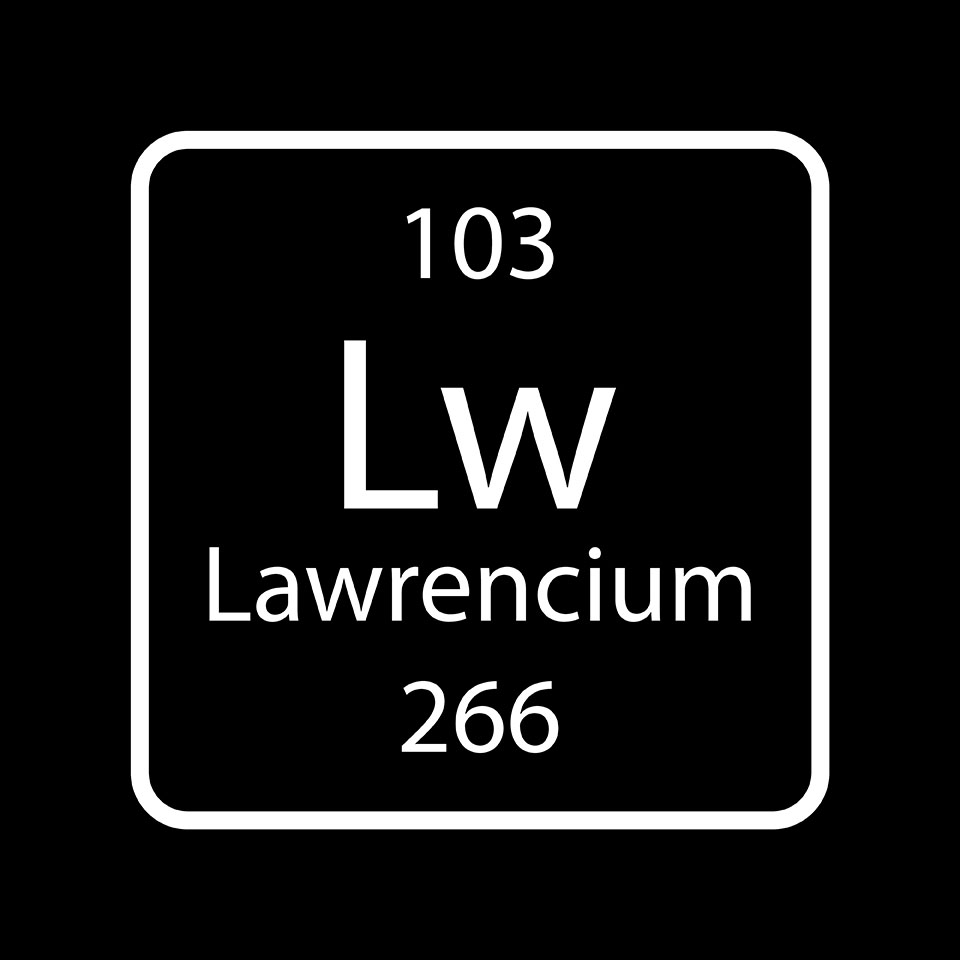

Lawrencium is a chemical element with the symbol Lr and atomic number 103. It is a radioactive metal that is named after Ernest Lawrence, the physicist who invented the cyclotron.
Lawrencium is the heaviest element that can be created by bombarding lighter elements with neutrons. It is so radioactive that it has a half-life of only 26 seconds. This means that half of the lawrencium atoms in a sample will decay into other elements in 26 seconds.
Lawrencium is a very rare element. Only a few atoms of lawrencium have ever been created. It is not used for anything practical, but it is studied by scientists because it is so interesting.
Lawrencium is a synthetic element that is named after Ernest Lawrence, the American physicist who founded the Lawrence Berkeley National Laboratory.

Noun: Lawrencium is the chemical element with the atomic number 103. It is a synthetic element, meaning that it is not found in nature. Lawrencium was first synthesised in 1961 by Albert Ghiorso and his team at the Lawrence Berkeley National Laboratory.
Adjective: Lawrencium is an adjective that describes something that is related to lawrencium. For example, a lawrencium isotope is an isotope of lawrencium.
Verb: To lawrenciate is to treat something with lawrencium. For example, to lawrenciate a sample is to treat it with lawrencium.
The word "lawrencium" is named after Ernest Lawrence, the American physicist who founded the Lawrence Berkeley National Laboratory. Lawrence was a pioneer in the development of particle accelerators, and he played a key role in the discovery of many new elements, including lawrencium.
The name "lawrencium" was chosen in 1965 by the International Union of Pure and Applied Chemistry (IUPAC). The name was proposed by Albert Ghiorso, the scientist who led the team that first synthesised lawrencium. Ghiorso chose the name "lawrencium" to honour Lawrence's contributions to science.
What is Lawrencium and how is it used?